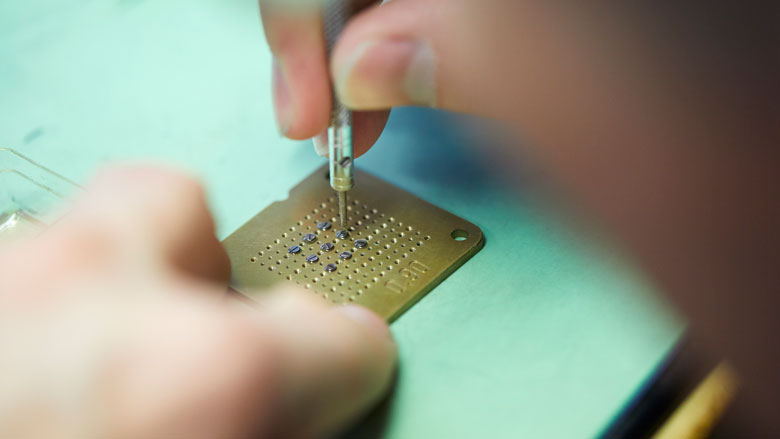
Update: The Naissance d’une montre 2 Project
To make the Naissance d’une montre 2 project as authentic as possible, Dominique Buser and Cyrano Devanthey, assisted by David Friedli, had to build a watch under the watchful eye of a committee. This committee was not a band of savvy marketing executives, but rather three seasoned watchmakers who produce some of the most sophisticated timepieces available today. Robert Greubel and Stephen Forsey were in charge of the style and layout of the movement, while Felix Baumgartner supervised its construction, and Martin Frei designed the case.
Each had their say in the production of this unique manually wound three-hand watch with a power-reserve indicator. “It all started as a bit of a joke between Dominique and I,” explains Cyrano Devanthey. “At watchmaking school, Dominique insisted that making a watch entirely by hand was within the realm of the possible, where I was far more skeptical, believing it to be an almost impossible task.” The challenge was on!

To meet the criteria of the Naissance d’une montre 2 project, the watch had to be traditionally handmade, innovative and beautifully finished. Quite a challenge! Buser and Devanthey’s movement structure features a couple of unusual and noteworthy features. The first is their constant-torque spring that coils between two drums. The rotating drums are wound through a planetary gear that provides constant power – a world-first for a wristwatch. The free-sprung balance is also unique with a bow tie shape and two opposing inertia screws.

To further explain: The relaxed spring coiled around the drum on the right is wound backward around the drum on the left. The tensed spring coils back around the right-hand drum, rotating both drums, which are linked by a planetary gear. The device works somewhat like the fusée and chain system by delivering constant torque to the movement throughout the travel of the spring. In the Naissance d’une montre 2, the system stores 80 hours of power reserve.

It all looked quite straightforward except that the movement was upside down, with the balance on the dial side. This meant that the going train had to be reversed. Once the work was underway, Buser, Devanthey and the committee decided that the watch looked too symmetrical, so the layout and the shape of some of the bridges were altered.

Even though the mission was to build a watch with the same tools as in the 1950s, modern technology came into play. Like all haute horlogerie watches today, the Naissance d’une montre 2 started as a virtual watch, built up and kinetically tested on a computer screen. But instead of sending the data electronically to the CNC programming console, the drawings, and specification sheets for each part were printed out.

The frosted Maillechort baseplate and bridges, steel bars, and minute and hour hands were created at the Greubel Forsey manufacture. The glass, jewel bearings, and blank for the hairspring were, of course, sourced from outside suppliers. Basically, they had to make all the mobile parts of the watch — the smallest and trickiest bits. They also had to make the screws and pins, the cover for the mainspring, the chapter ring, and dials for the small seconds and power reserve.

Buser and Devanthey drew up a list of the tasks and tools required to make 20 essential components consisting of 104 different parts and almost 200 parts in total, winning the bet for Buser!

Under the aegis of the Time Æon Foundation, Robert Greubel, Stephen Forsey, Felix Baumgartner and Martin Frei have decided to support the project of two talented watchmakers for Naissance d’une montre 2. Under the benevolent gaze of their elders, these two watchmakers will create from scratch, by hand, an exceptional watch. Then in turn they will pass on their experience and knowledge.
